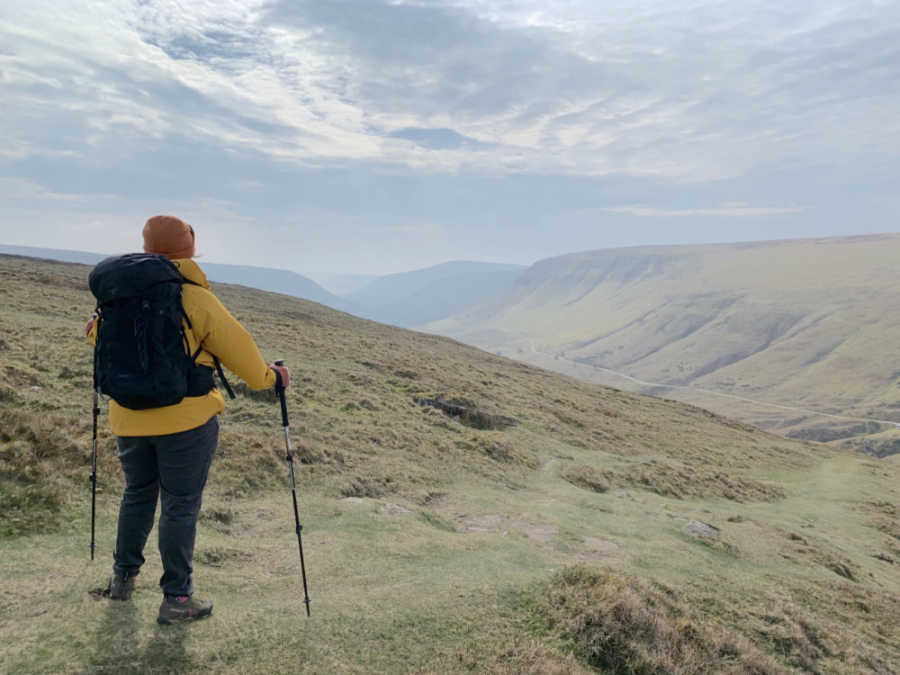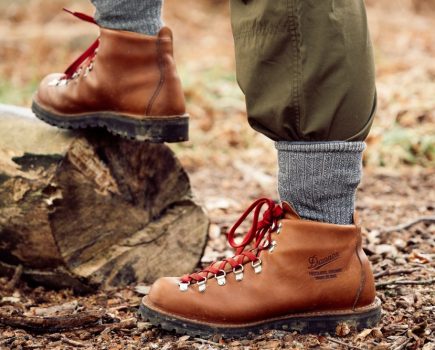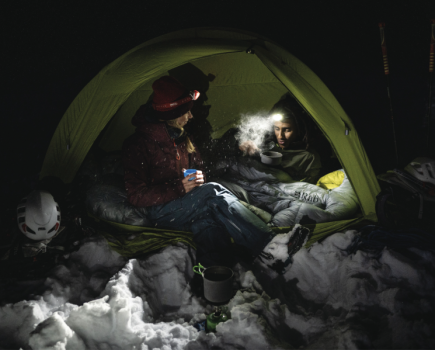After footwear and a decent waterproof, a genuinely comfortable and reliable daypack – or a hiking backpack – is one of the most important things any hill-lover can invest in. Be it for a day pottering about in the hills or for something longer or more strenuous, finding the right daypack for you is crucial. A daypack should be a useful size for the purpose it is intended for. For the time being, we’ll concentrate on hiking backpacks for women that can fit all you need for a day in the hills without sacrificing support or durability.
There are often capacity differences in hiking backpacks, with the women’s version often having a smaller volume. It’s a frustrating difference, given we all carry a similar range and amount of kit, and can force women into considering a larger and usually more expensive pack to match capacity.
Main image: Lara testing the Osprey Tempest | Credit: Lara Dunn
To get the best possible value for money, think about the various uses it may be put to, from shopping and commuting to lightweight summer overnighters, winter day trips or European via ferratas. The pack should offer a stable and comfortable wear for long periods of time. A range of pockets is useful but details are a matter of personal preference. Raincovers might seem handy for hiking in Britain’s weather but are rarely fully waterproof and do tend to blow away unless attached. The dream is a pack you can wear but stop noticing, no matter how challenging the trail or load.
Stability is vital when it comes to uneven and more technical trails and scrambles, making harness shape, adjustment and configuration a key factor in getting the right outcome for any given wearer’s frame and shape. Straps, both shoulder and hip, should have the correct amount of padding and the optimal shape for the individual wearer.
Gender specific or unisex? Some brands have shrunk their ranges in recent years, but many ‘average build’ women – and more slightly built men – find that hiking backpacks for women may offer more comfort. Female-focussed packs usually offer a tuned shape and chassis, to accommodate different back lengths and widths, as well as allowing for the fit and comfort requirements of hips and busts. For the best in men’s daypacks, see our guide to the best backpacks for men.
Why you can trust The Great Outdoors
The Great Outdoors is here to help you make the most of your time outside. We have been helping people to explore from sea to summit, valley to mountain top for over 40 years. Our gear tests remain completely impartial. If you are wary of websites that only review brands that advertise with them, or sceptical of social media accounts always singing the praises of their latest freebie, you’ve come to the right place! Our reviews rank #1 for rigour, trustworthiness, and independence, and our gear testing team is the most experienced in Britain. With over 200 years’ experience between us, we are professional mountain leaders and instructors, wildlife photographers and rangers, outdoor authors, guidebook writers and trail addicts.
Our picks of the best hiking backpacks for women
Lara Dunn and Fiona Russell have compared the best hiking backpacks for women on the market. We’ve also got a handy guide that answers the question: can you use a regular backpack for hiking? Gear shouldn’t be a barrier when it comes to enjoying the outdoors but it’s always good to know the limitations. This explainer on the different types of pack may also help you.
| Quick List |
|---|
| Greener choice: Osprey Tempest 33 (available from Cotswold Outdoor) |
| Lightest in test: Lowe Alpine Women’s AirZone Trek 26L (available from Cotswold Outdoor) |
| Best adjustable fit: Mystery Ranch Women’s Coulee 30 (available from Mystery Ranch) |
| Best value: Mammut Ducan 32 Women (available from Millets) |
Osprey Tempest 33
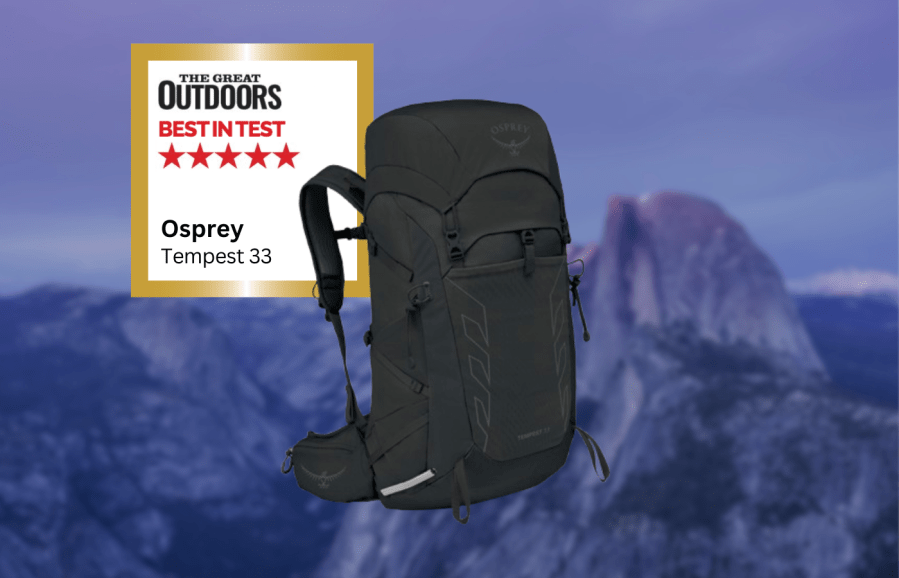
Lara Dunn’s Best in Test
This pack demonstrates great value for money for an extremely technical and competent, versatile daypack.- lightweight
- fully featured
- comfortable
- stable
- sustainability credentials
- no raincover
| Quick specs | |
|---|---|
| RRP: $190 / £155 (available from Cotswold Outdoor) Weight: 1192g Capacity: 33 litres Materials: 100% recycled 100D high-tenacity nylon with dobby check ripstop, 100% recycled 420D nylon base Back system: adjustable Airscape back system Pockets: Stretch mesh side and front pockets, zipped hipbelt pockets, ice axe and trekking pole attachments, Features: dual compression straps, , internal hydration sleeve, sternum strap with whistle Sizes: one Men’s version? Talon 33 osprey.com |
One area in which this pack truly excels is fit. Finding a genuine female-specific pack at this size is unusual, with most packs using a unisex chassis in the smaller volumes, reserving gender specific tweaks for larger trekking packs. Even more unusual though, is finding one where the fit can be fine-tuned further still. The harness has a sliding adjustment to accommodate different torso proportions and straps are arranged to tweak the fit to suit at shoulders and hips. The result is comfortable for long days and extremely stable.
Size wise, this 33 litre pack is large enough to accommodate kit for a long winter mountain day, a lightweight overnighter (or two) or even a trip to the shops. It can be cinched in easily when not full, making it flexible for a variety of load carrying, not just the big days.
Given the sheer number of features it offers, it’s surprisingly lightweight, yet still tough enough to cope with a good battering in the hills. The pack has ice axe/trekking pole attachment loops, which are straightforward to use. The rugged fabric is made from 100D 100% recycled nylon with a PFAS-free water repellent treatment, and a tougher and more durable 420D base, again made from recycled nylon. The whole pack is bluesign approved. Not only is this a pack that’s built with an eye to the environment, but it should also last for a good number of years, making for less waste and landfill. It’s quite surprising that such a well-designed and well-made pack comes in at a pretty reasonable price.
Read more: Lara Dunn’s full Osprey Tempest 33 review
Lowe Alpine Women’s AirZone Trek 26L
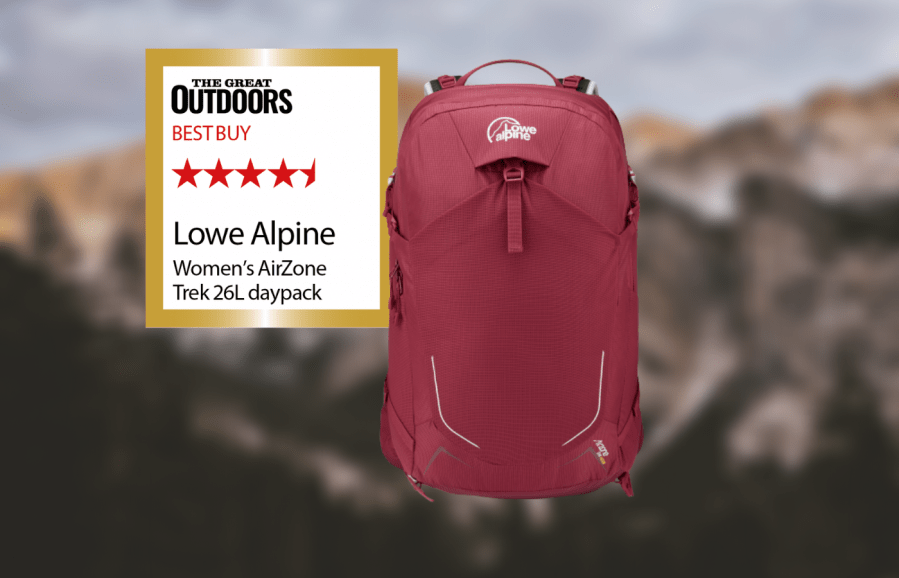
Fiona’s Best in Test
A daypack that could easily become a favourite. My sole criticism is that the fastening clips are small and so are fiddly to operate with gloves.- Comfy
- Waterproof
- Mesh back
- Small clips
| Quick specs | |
|---|---|
| RRP: $175 | £130 Weight: 815g Capacity: 26 litres Materials: 210D 6.6 Mini Ripstop / HydroShield nylon with PFC-free DWR Closure: large zip top Back system: AirZone + back system with FormKnit technology foam Back length: 43-48cm Hipbelt: padded Pockets: 2 side mesh, 2 zipped hipbelt, zipped top, zipped internal, internal hydration sleeve Features: forward pull hip-belt, axe attachment, walking pole attachments, sternum strap with whistle, hydration bladder compatible, upper and lower side compression straps, detachable raincover Sizes: one |
Fiona Russell: The Airzone Trek is a pack that I’ve had the chance to use, and it’s proven to be quite comfortable. The hipbelt and shoulder straps come with light padding, and it features a suspended back system, adding to its overall comfort. What’s great about it is the 5cm of torso adjustment, as well as sternum strap adjustment, making it suitable for individuals with different chest sizes.
In terms of organization, it doesn’t disappoint. There’s a main compartment with a two-way zip and a convenient drop-down front panel. Inside, you’ll find an internal bladder pocket, a hanger, and a single feeder hole for the drinking tube, making it perfect for hydration on the go. Additionally, there’s a smaller internal pocket with zipped access from the top of the pack for your smaller essentials.
It’s worth noting that there are zipped pockets on the hipbelt, although they can be a bit of a squeeze for a mobile phone. The pack also includes some small reflective details, four compression straps, and attachments for walking poles and an ice axe, showing great attention to detail. However, one minor drawback is the fastening clips, which are on the smaller side and can be a bit fiddly to operate, especially with gloves on.
Read more: Lowe Alpine Women’s AirZone Trek 26L review
Deuter Futura Pro 34SL
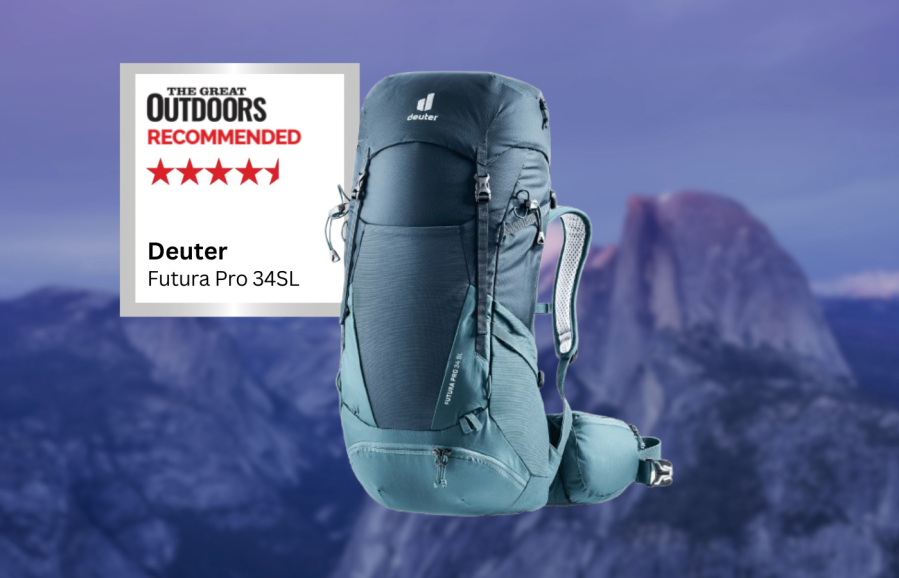
Lara Dunn recommends
The clue is in the name ‘pro’ – this is a reliable and durable investment pack for even the most demanding users.- super rugged and durable
- fully featured
- very comfortable
- expensive
- quite heavy
| Quick specs |
|---|
| RRP: $190 / £180 (available from Millets) Weight: 1572g Capacity: 34 litres Materials: 600D polyester with PU coating and 210D 50% recycled polyamide Back system: Deuter Air Comfort back system Pockets: front and side mesh pockets, zipped hipbelt pockets, interior and exterior zipped lid pockets (with emergency guidelines) Features: trekking pole/ice axe loops, dual compression straps, internal hydration sleeve, sunglasses loop, detachable raincover Sizes: regular and plus size Men’s version? One; Unisex, non-SL: Futura Pro 34 www.deuter.com |
Costing a fair bit more than most packs of this size, it’s safe to say that expectations of the Futura Pro 34SL were high. It didn’t disappoint. This is a superbly made daypack with a wealth of features and rugged no-compromise design and construction. From its female-friendly fit to its tough fabric, this is a top-spec daypack designed for whatever is thrown at it, from summer day walks right up to winter climbs.
The pack is supremely comfortable thanks to its super-padded supportive hipbelt, designed to contour around the hips and move with the wearer. The padded fins are much larger than is common on a daysack, providing excellent stability to go with that sumptuous comfort. The highly ventilated back system and well-shaped harness straps work well with that hip belt to maximise wear comfort for long days on the hill. The quality of construction is matched with all the bells and whistles – the only thing actually missing IS a whistle – in terms of features.
There are plenty of internal and external pockets, including zipped lid pockets and a large mesh front stash pocket. The trekking pole and axe attachments are easy to use even with gloves on and the side mesh drinks bottle pouches are roomy and deep. A hydration bladder is catered for as well. The interior of the lid even has guidance on what to do in an emergency. It’s well-suited to lightweight overnighters too, with excellent useable volume for its relative size, and zipped access at the bottom as well as the main access at the top. The clue is in the name ‘pro’ – this is a reliable and durable investment pack for even the most demanding users.
Read more: Lara’s full Deuter Futura 43SL review
Mammut Ducan 32 Women

Lara Dunn recommends
Its low weight and bulk make it a decent value for money choice for fast paced hikes and scrambles or simply for those who like to keep their load weight to a minimum.- very lightweight
- stable
- good price
- stretch cord chest harness won’t please everyone
| Quick specs |
|---|
| RRP: $182 / £135 (available from Millets) Weight: 1003g Capacity: 32 litres Materials: 90% polyamide/10% polyester Back system: Contact Stream back system Pockets: front stash pocket, side mesh pouch pockets, hydration system compatible, exterior zipped top pocket, hip belt pockets – one mesh, one zipped with phone pocket Features: Women’s specific fit, trekking pole loops, adjustable stretch chest harness, detachable raincover Sizes: one Men’s version? Ducan 32 www.mammut.com |
The lightweight fabric (which incorporates recycled materials) is still tough and the base is made of sturdier material to ensure good wear. Despite its low weight, there’s no skimping on features here, with zipped internal and external lid pockets, large stretchy front mesh stash pocket and spacious side mesh bottle pockets with handy drawstrings to secure bottles. It’s also hydration system compatible.
Wear comfort is good, with broad low-profile, flexible hip fins giving a supportive fit that contours around the hips nicely, moving subtly with a natural gait. The single zipped hip pocket – the other side is a stretch mesh pocket – is relatively small but it also contains a pouch designed to hold a phone which helps make up for it.
Shoulder straps are low bulk like the hip belt and equally well-shaped. Storage space feels less generous than some of a similar quoted volume, but it’s far from cramped and certainly plenty for a good long day out. The low weight and bulk make it a decent value for money choice for fast paced hikes and scrambles or simply for those who like to keep their load weight to a minimum.
Read more: Lara’s full Mammut Ducan 32 Women review
Haglöfs Women’s L.I.M 35
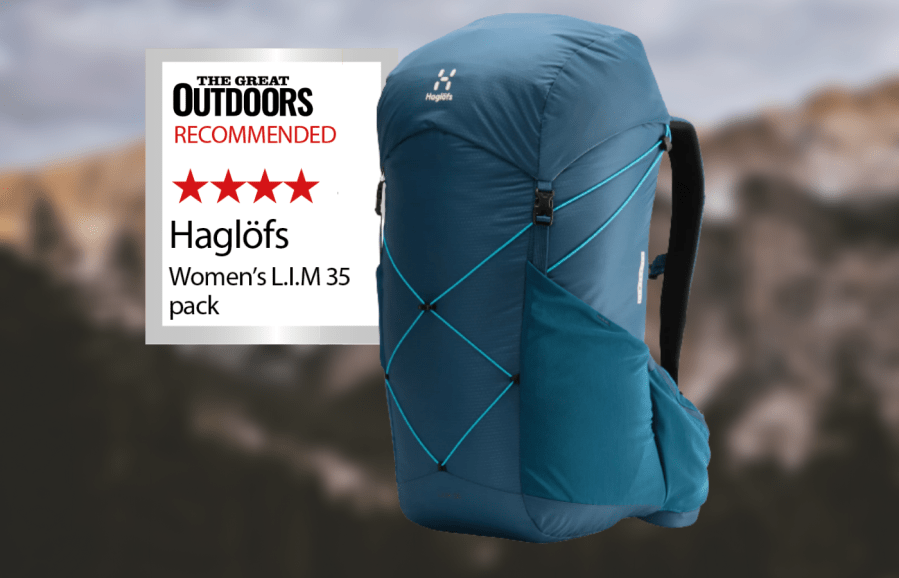
Fiona Recommends
Overall, if you’re in the market for a lightweight pack that offers comfort and a straightforward design, the Haglöfs L.I.M 35 is definitely worth considering.- Comfy
- Lightweight
- Ventilated back
- No torso adjuster
- Small clips
- One size
| Quick specs | |
|---|---|
| RRP: £140 (Buy now from alpinetrek.co.uk) Weight: 929g Capacity: 34 litres Materials: bluesign-approved 70D*140D diamond rip-stop polyamide Closure: 2 clipped top lid Back system: airback suspension system Back length: 49cm Hipbelt: padded Pockets: 2 side mesh, 2 zipped hipbelt, zipped top, internal hydration sleeve Features: compression system, gear attachment, adjustable sternum strap, load lifters Sizes: one |
Fiona Russell: I recently had the opportunity to check out the Haglöfs L.I.M 35 pack, and it’s definitely a lightweight and pared-down option that has a lot to offer. One of its standout features is the well-designed mesh back, which provides excellent ventilation and enhances comfort during use.
The pack follows a more traditional design with a top opening and a lid, and it incorporates a sophisticated cinch system. Inside, you’ll find a main compartment and a hydration pocket with a hanger. Additionally, there’s a zipped external top lid pocket, which is quite handy, and two roomy zipped hip pockets for quick access to your essentials.
However, it’s essential to note that this pack lacks torso length adjustment, which might be a drawback for some users. Also, it’s relatively long, so it may not be the best fit for shorter individuals, especially shorter women.
Another consideration is the design of the zip pulls, which are on the minimalist side, and the clips on the hip belt, sternum strap, and for the top lid can be a bit fiddly to operate, especially when wearing gloves.
Overall, if you’re in the market for a lightweight pack that offers comfort and a straightforward design, the Haglöfs L.I.M 35 is definitely worth considering.
Read more: Haglöfs L.I.M 35 pack review
Mystery Ranch Women’s Coulee 30
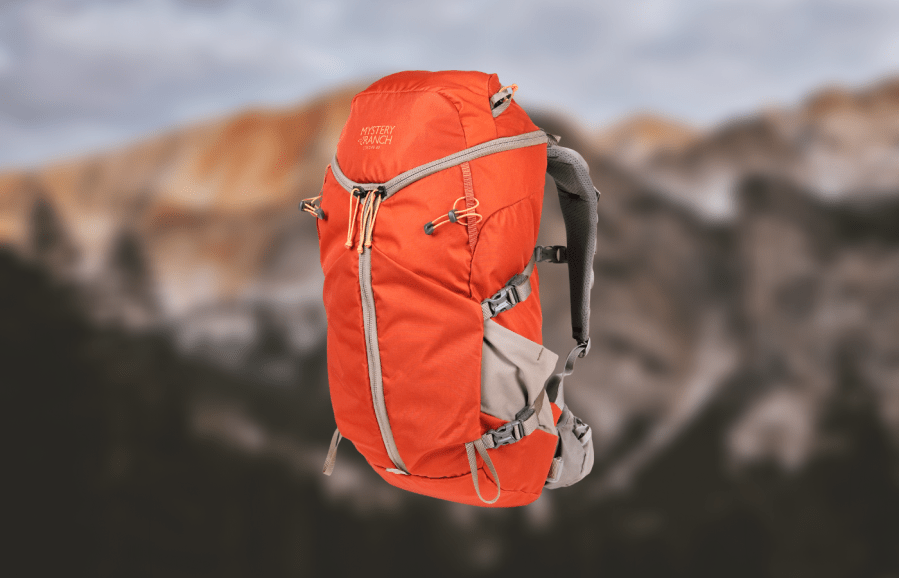
Fiona’s verdict
Despite a few minor issues, this hiking pack seems to be a good choice for female hikers, offering adjustable sizing and a thoughtful design for various outdoor adventures.- Two sizes
- Adjustability
- Poor zip design
- Complicated zipping
- Price
| Quick specs |
|---|
| RRP: $189 | £190 (Buy now from mysteryranch.com – US only) Weight: 1158g Capacity: 30 litres Materials: 100% recycled nylon 210D Robic nylon, external DWR, internal PU coating, both PFC-free Closure: three-zip lid and front access Back system: padded Back length: XS/S: 33-46cm; M/L: 41-46cm Hipbelt: padded Pockets: 2 back fabric, 2 side mesh, 2 zipped hipbelt, zipped top, internal hydration sleeve Features: YKK zips with DWR finish, interior attach loops, torso length adjustment, double-layer base, side compression, tool attach points Sizes: XS/S, M/L |
Fiona Russell: I’ve had the opportunity to test out this hiking pack, and it’s clearly designed with a focus on accommodating a wide range of female users. It comes in two different sizes, offering flexibility for various body types. Additionally, the pack features torso length adjustment and a moveable sternum strap, which are valuable features for achieving a comfortable fit.
One of the standout features of this pack is the three-zip access design, which is quite inventive. However, it’s worth noting that there is a small gap where the zips meet, which could potentially be a minor concern.
The main compartment is well thought out, with a rear pocket designed to hold a hydration bladder. There are also two feeder holes for the drinking tube, which is a nice touch. On the sides, you’ll find two stretchy open-top pockets that are great for carrying water bottles or other essentials.
The pack includes ample padding in both the hipbelt and shoulder straps, ensuring comfort during extended use. However, one drawback is the padded rear of the pack, which can lead to a sweaty back during warmer weather or more strenuous activities.
Lastly, the two zipped waistbelt pockets are a convenient addition, but they are positioned relatively far back and may not be the easiest to access quickly. Despite a few minor issues, this hiking pack seems to be a good choice for female hikers, offering adjustable sizing and a thoughtful design for various outdoor adventures.
Read more: Mystery Ranch Women’s Coulee 30 daypack review
How we test the best hiking backpacks
Lara used the packs through winter and spring on a variety of walks and hikes in the Malvern Hills, Black Mountains and Brecon Beacons. She is 5’5” tall with a relatively short back length in relation to her height. Lara’s reviews of the best hiking backpacks and daypacks first appeared in the August 2025 issue of The Great Outdoors.
Fiona is tall and thin, with a small chest. She put the hiking daypacks through their paces while hiking trails and hill routes in Scotland. The weather ranged from mild to damp and windy. She then asked a female friend who was shorter in size but had a bigger chest to try on the packs. Fiona’s reviews of the best hiking backpacks and daypacks first appeared in the April 2023 issue of The Great Outdoors.
What to look for in the best hiking backpacks
Capacity
Hiking packs for hillwalking run from 20 to 35 litres in volume. Regardless of the claimed capacity will a pack hold all the gear you want to carry? Litres are not a fixed amount when it comes to packs! It’s always worth thinking how your gear will fit inside. If you think you might want to carry extra gear at times, look for straps and shockcord for attaching it.
Back length
Back length isn’t as important with small packs as it is for big ones designed for heavy loads. As long as the top of the pack isn’t far below your shoulders when the hipbelt is round your hips, the pack should carry okay.
Back system
For heavier loads an internal frame or stiff framesheet that transfers the weight to the hipbelt is useful. In small packs this isn’t essential, though one does make packing easier and stops hard items poking you in the back.
Hipbelt/waist strap
Padded hipbelts should fit snugly round the hips.
Pockets
Pockets are useful for organising gear, especially small items that might be needed during the day. Mesh pockets are useful for wet items, allowing them to drain and dry out. Check that pockets are the right size for your gear.
Straps
External straps can be used for attaching items such as foam pads or trekking poles and for compressing the size of the pack when a small load is carried. They should be easy to adjust and not interfere with access to pockets.
How to fit a backpack
To find the right fit packs should be tried on fully loaded. It’s worth taking time to do this. A comfortable pack makes a huge difference to the enjoyment of a backpacking trip. Most packs come with specific fitting instructions and it’s always worth following these.
The key for the correct fit is the length of your back, measured from the base of the neck to the upper hipbone (technically from the seventh cervical vertebra to the top of the iliac crest). Having someone measure your back length with a flexible tape measure is the best way to find this. Your actual height is not important – some people have long legs and short backs, other have short legs and long backs.
Learn more about how to fit a backpack.
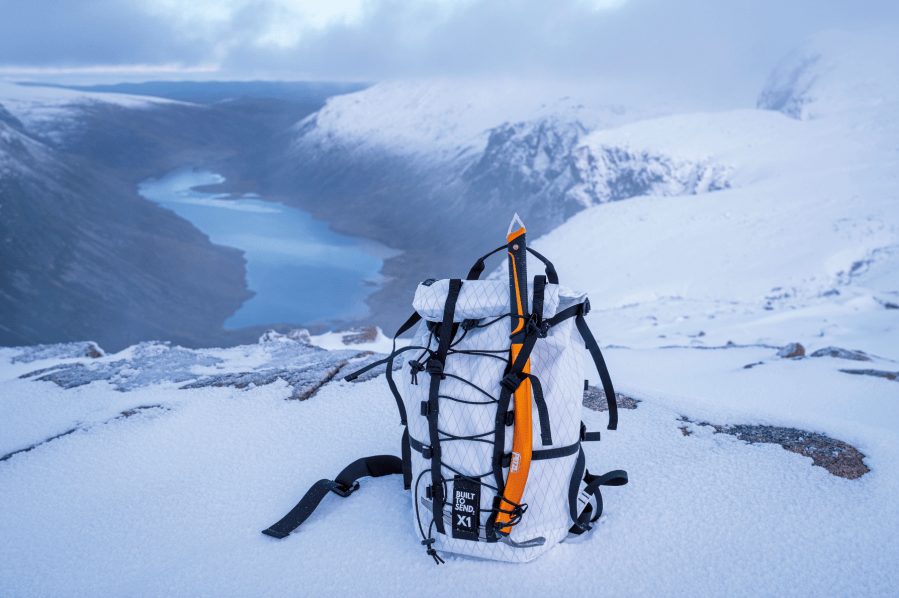
How to pack a daypack
The most important principle is to ensure that the loaded pack is comfortable to carry by distributing the weight evenly. This may not matter so much for shorter walks. But for longer trips, when both your mileage and the weight on your back increase significantly, it starts to become a major factor in overall trail happiness.
The second thing to bear in mind is that you’ll want easy access to items you’ll need regularly, or in an emergency situation. In the first instance, this means being able to scoff a snack or swig from your water bottle without needing to empty out half your pack’s contents. Similarly, if the wind picks up or the heavens open, you’ll want to be able to grab extra layers (like your waterproofs) quickly and easily. The same applies in an emergency scenario. Hopefully, this won’t be anything too dramatic. But if you need a blister plaster, it helps if your first aid kit is within easy reach.
As long as you follow those main principles, you won’t go too far wrong. So, despite what many outdoor websites will tell you, there isn’t really one definitive ‘right way’ to learn how to pack a backpack. At the end of the day, it’s your pack and your back, and you’ll invariably find a system that works for you. Exactly where everything should be placed becomes largely a matter of personal preference.
Learn more about how to pack a daypack.

Can I make my backpack waterproof?
Most hiking backpacks are not waterproof. Although the fabric usually is, the seams, stitching and zips are not. Sealing these is complex and expensive. There are waterproof backpacks available from companies like OverBoard made from tougher, more puncture-resistant fabrics than ordinary backpacks. These have basic designs and are really drybags with shoulder straps and a few external features. For activities where getting your backpack soaked or even immersed is a real risk – canyoning, kayaking, pack rafting – such packs may be worthwhile. However, for most uses they’re overkill.
However, there are several ways to keep the contents of a standard backpack dry. All of them have advantages and disadvantages. For water-sensitive items like electronics and down sleeping bags and clothing it’s worth using more than one.
Many backpacks come supplied with pack covers, usually stored in a zipped compartment in the base. These are made from waterproof fabric and are shaped to fit over the pack. Pack covers can be bought separately in different sizes for packs that don’t come with them. They should have elasticated edges or adjustable drawcords so they can be closed tightly around the pack.
Rather than put a cover over your pack you can line the inside with a large waterproof bag – or a pack liner. This can be as simple as a heavy-duty bin bag. These are cheap and effective until they tear, which they do quite quickly. Purpose-made pack liners and ones designed for rubble or garden waste are much tougher.
Perhaps the best but most costly solution is to pack your bag with lightweight drybags. They have taped seams and roll tops come in a large range of sizes. With a selection of these, you can pack items separately. So nothing is exposed to the rain that doesn’t need to be when you open the pack to get something. A large drybag can also be used to line the whole pack. The only disadvantages of drybags are the need to remember what’s in each bag (different colours help and some are available with clear sections) and the cost.
Learn more about how to keep your belongings dry on the trail.

